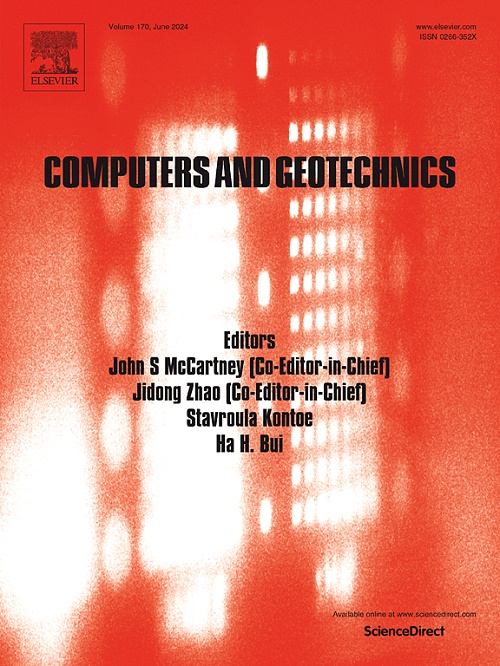A DEM sensitivity study on the effects of contact parameters on triaxial response for the development of a calibration method
IF 5.3
1区 工程技术
Q1 COMPUTER SCIENCE, INTERDISCIPLINARY APPLICATIONS
引用次数: 0
Abstract
Discrete element modeling (DEM) is a useful tool for linking global responses of granular materials to underlying particle-level interactions. A DEM model capable of capturing realistic soil behavior must be calibrated to a reference dataset, typically consisting of laboratory experiments. Calibration of a DEM model often requires numerous simulations as contact parameters need to be iterated upon until the simulation results satisfactorily replicate the experimentally observed behaviors. This paper presents a sensitivity investigation that examines the effects of the contact parameters on the drained triaxial compression response of a poorly-graded sand. It then introduces a calibration procedure capable of providing contact parameters that satisfactorily reproduce the results of laboratory triaxial results in a few simulations. Results show that friction and rolling resistance coefficients jointly influence the mobilized peak and critical state friction angles, secant shear modulus, maximum dilation rate, total volumetric strain, and strain softening magnitude. These parameters also influence the mode of failure at contacts and the evolution of fabric anisotropy. The influence of μr or μ on the triaxial response and particle-level interactions is coupled, becoming more profound as the other parameter is increased. Contact stiffness is shown to influence the shear modulus and volumetric change behavior independently of μ and μr. An algorithm that estimates values for μ and μr needed to reproduce experimental results is developed using triaxial response parameters from experimental datasets. The performance of the proposed calibration method is demonstrated for three natural sands showing that it provides appropriate calibrated parameters for poorly graded sands with different relative densities and confined with varying effective stress magnitudes.
求助全文
约1分钟内获得全文
求助全文
来源期刊

Computers and Geotechnics
地学-地球科学综合
CiteScore
9.10
自引率
15.10%
发文量
438
审稿时长
45 days
期刊介绍:
The use of computers is firmly established in geotechnical engineering and continues to grow rapidly in both engineering practice and academe. The development of advanced numerical techniques and constitutive modeling, in conjunction with rapid developments in computer hardware, enables problems to be tackled that were unthinkable even a few years ago. Computers and Geotechnics provides an up-to-date reference for engineers and researchers engaged in computer aided analysis and research in geotechnical engineering. The journal is intended for an expeditious dissemination of advanced computer applications across a broad range of geotechnical topics. Contributions on advances in numerical algorithms, computer implementation of new constitutive models and probabilistic methods are especially encouraged.
 求助内容:
求助内容: 应助结果提醒方式:
应助结果提醒方式:


